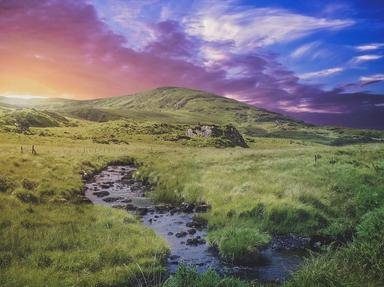Quiz Answer Key and Fun Facts
1. In the 1841 census the population of Ireland was 8,175,124. After a dramatic natural event occurred, what was the population in the next census in 1851?
2. What is the name of the Stone Age site on the North Mayo coast which contains one of the oldest field systems discovered in the world?
3. What is the biggest lake (lough) in Ireland by surface area?
4. What year marked the beginning of the English conquest of Ireland?
5. The Shannon is Ireland's longest river, but which is the second longest river, beginning in the Slieve Bloom Mountains in County Laois and discharging into the Celtic Sea at Waterford?
6. What is the highest mountain in Ireland?
7. Name the group of islands in Galway Bay on the west coast of Ireland.
8. The Government of Ireland Act effectively partitioned Ireland into Northern and Southern states. On what date was the state of Northern Ireland established?
9. An illuminated manuscript of the New Testament gospels, written around 800AD and housed in Trinity College Dublin, is regarded as the finest example of its kind in the world and as an Irish national treasure. What is the name of this manuscript?
10. Until the end of the 19th century, Ireland produced around 90% of the world's whiskey. Which Irish distillery lays claim to having the world's oldest licence to distill this 'water of life'?
Source: Author
dsimpy
This quiz was reviewed by FunTrivia editor
Pagiedamon before going online.
Any errors found in FunTrivia content are routinely corrected through our feedback system.

